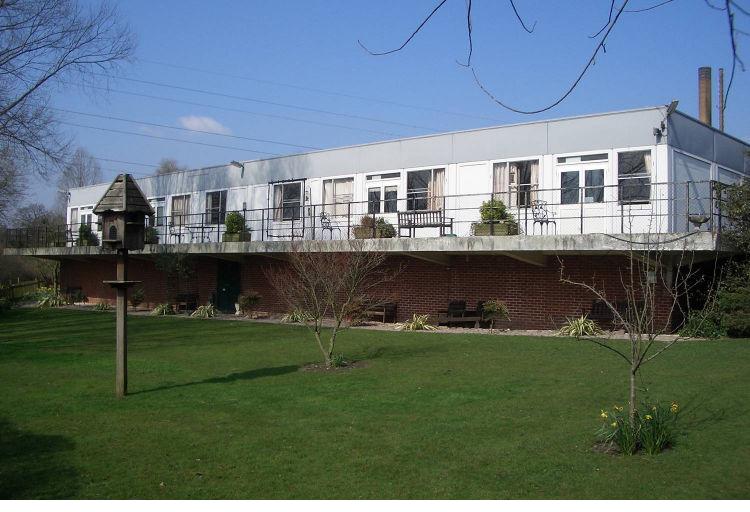
Bridge is a social game and bridge players are great supporters of charitable causes. If you can marry bridge playing with raising funds for a local charity, you are probably onto a winning strategy. The Sobell Bridge Club is living proof that this can work. If your club is looking for a new venue and a cause to raise funds for, perhaps you might see if the local hospital has suitable premises. Organisations there are bound to welcome financial support. The following article first appeared in the Hertfordshire Bridge Association Newsletter, and we thank the HBA for allowing us to reproduce it here. Doug Edmonds, the Club Chairman, tells its story.

The Sobell Bridge Club gets its name from its association with the hospice Michael Sobell House located in the grounds of Mount Vernon Hospital in Northwood. The Club began in May 1992 when a meeting of 30 people adopted a constitution whose aims were:
These ideas found support amongst the Hospice's management and medical staff. Bridge was considered to be socially rewarding and mentally stimulating. It was seen as a partnership game that could be played by anyone regardless of age, disability, sex or religion. It would give participants an opportunity to meet with friends with the added satisfaction of involvement in a worthwhile cause. Those who knew nothing about the game could be encouraged to join and receive instruction.
Within a year the club had 52 members and another 30 on the waiting list. By 1994 membership had grown to 152 and donations to the Hospice amounted to £7600. There were now two weekly sessions and quarterly Saturday bridge drives with a raffle and a supper generating a £1000 profit from each drive. The club further expanded through an afternoon session at a nearby church hall.
In 1993, the club instituted bridge weekends away and to this day it holds four such weekends annually at various hotels within 90 minutes of Northwood. These too make a modest profit for the Hospice whilst furthering the club's social aims.
The club's membership was boosted by the introduction of a thirteen-week beginners training course supported by refresher and improvement classes. By 1996 membership was nearly 300 and donations to the Hospice amounted to £18,200. The club now played on four nights of the week. By 1997 membership was 360 and the cumulative Hospice donations amounted to £60,000.
There then followed a somewhat frustrating process of searching for larger and more permanent premises. A building fund was created and was fed by an increase in the table fee. The lottery fund was contacted but to no avail. A joint venture with the local cricket club was also explored. Eventually the club agreed to the use of its fund to help finance a building for administrative and education purposes to be used by the Friends of Michael Sobell House. It included a hall of sufficient size to accommodate 25 tables that would be used for education during the day but for bridge for the five evening sessions together with a storeroom and an office solely for the club's use. The new premises opened in 2007.
Since that time we have lost many of our founding fathers, in particular, Stanley Nicholls, without whose drive the club would not exist. He established a club with firm foundations that now raises about £36,000 each year to support the hospice. This is a small contribution in the context of the Hospice's total running costs but it also serves to widen the community's involvement in the Hospice.
The club has changed since its foundation. Most of its bridge is now duplicate. The playing standard has probably improved as the club's members gain more experience and as new people join. Nevertheless, it remains true to its original aims. The emphasis is on its social and charitable goals, and it is unlikely that the club will become a beacon for county-standard players. However, it is clubs such as ours that are the backbone of bridge.
Further information on the club can be found at http://www.sobell-bridge.org.uk